Audio vs MIDI
A Soft Synced Companion Guide
Soft Synced Environment → Beginner Track → The Basics Course → Lesson 10
Introduction
Plugins extend your DAW into a complete studio. They replicate classic hardware like compressors and EQs, introduce digital-only effects, and give you almost unlimited sound-shaping power. Knowing how plugins work is understanding when, why, and in what order to use them.
Core Concepts
What Plugins Are
Plugins are software tools that process or generate audio. Think of them as modular components you can insert into your signal chain. Some shape tone (EQ), others control dynamics (compressors), and others add space (reverb, delay).
Built-In vs. Third-Party
Your DAW includes stock plugins designed to cover all core needs. Third-party plugins often specialize, emulating vintage gear or offering unique workflows. Stock tools are more than enough to learn with, and then some. Invest in third-party options only when you know exactly what problem you’re solving. This is sometimes easier said than done because of something commonly referred to as G.A.S. Haven’t heard of it before? Research it!
Plugin Categories
Dynamics: compressors, limiters, gates control volume and punch.
Frequency: EQs, filters shape tonal balance.
Time-Based: reverb, delay add space and depth.
Modulation: chorus, flanger, phaser movement and texture.
Distortion/Saturation: add harmonic richness or aggressive edge.
Order in the Chain
Signal flows through plugins top to bottom, just like pedals on a guitarist’s board. A compressor before EQ sounds different from EQ before compressor. There are common starting points (EQ → compression → reverb/delay), but creative results often come from breaking convention.
CPU Usage
Each plugin consumes processing power. Simple EQs are lightweight, while convolution reverbs or analog emulations are heavy. Too many intensive plugins can cause glitches. Watch your CPU meter and consider bouncing tracks to audio when needed.
Presets
Presets provide starting points but rarely fit perfectly. Use them to learn what controls do, then adapt them to your track. Developing the habit of tweaking presets is key to moving from beginner to confident producer.
Producer FAQs
-
Presets are designed as generic starting points. They can be useful for quick ideas, but every recording is unique such as mic choice, room sound, performance dynamics all differ. If you stop at presets, your mix risks sounding disconnected or “cookie cutter.” By tweaking, you learn what each control does, and you adapt the effect to the specific context of your track. Over time, this ability to adjust becomes more valuable than any preset.
-
Beyond CPU overload and dropouts, too many plugins can create a messy signal path. Stacking effects without intention often makes mixes sound processed rather than polished. Professionals typically use fewer plugins than beginners expect. The focus is on making deliberate, purposeful moves. If you find yourself stacking plugins endlessly, it’s usually a sign the core recording or arrangement needs attention instead.
-
Yes. For example, compressing before EQ means the compressor reacts to all frequencies equally, including unwanted low-end rumble. EQ before compression can clean the signal so the compressor only responds to what matters. There’s no single “correct” chain, but the differences are real and audible. Learning to hear those differences is a key skill in mixing.
-
Not at all. Many professional engineers work with stock plugins daily. Third-party plugins can offer efficiency, inspiration, or specific tonal flavors, but they’re enhancements, not requirements. If your fundamentals are solid such as balance, EQ, dynamics, you can achieve professional results without spending extra. Third-party tools should be viewed as specialized options, not shortcuts to quality.
Quick Reference
Plugin Categories
Dynamics • Frequency • Time-Based • Modulation • Distortion/Saturation
Signal Flow
Order matters • Common: EQ → Compression → Reverb/Delay • Break rules intentionally
Best Practices
Use presets as guides • Monitor CPU • Stock plugins are enough to start
Next Steps
Plugins open nearly endless possibilities, but the best plugin chain won’t matter if you can’t hear what it’s doing or if you aren’t able to use it with intent. That’s why the next lesson shifts focus to the most important “plugin” of all: your own ears, and the monitoring tools that train them.
The Guides are your reference. The app is your journey.
